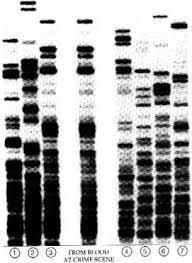PolymErase the Evidence: Concerns in DNA profiling
- Daphne Hung
- Aug 7
- 2 min read

Criminology has advanced alongside modern technology. Without the invention of techniques such as DNA profiling , offender DNA registration showed a reduction in property crimes by 42%, violent crime by 60% and weapon offenses by 88% in the first year after database entry wouldn’t have happened. However, the nature of biology is so complex that even the most robust DNA profiling tools may lead to misjudgements.
With a morbid curiosity in unsolved cases, here are some of the ways in which DNA amplification and profiling produces misleading results, and the circumstances that lead to it.
Low template DNA leading to Stochastic Effects:
Any criminal with common sense would do whatever it takes to destroy evidence. Mixtures exist. As such, there could be DNA samples with very low concentrations of the molecular marker. Say, if DNA is being amplified, there could be allied dropout () and dropin () which could change the interpretation of a DNA profile. Such is called the ‘stochastic effect’. What comes out of a PCR test may have no matches to any existing profile just because some genetic sequences are not replicated completely.
DNA Mixtures:
If a DNA sample has more than one identity (e.g items handled by more than a person), determining the perpetrator could be difficult. There are several reasons why.
-difficult to isolate
-low proportion of each individual DNA for amplification
-similar concentrations, in severe cases
In such cases , DNA ratios are used to determine the probability of each individual perpetuating the crime, which is usually invasive and violent. It would be more easy to interpret a profile if one individual’s contribution to the sample is much higher than the other when the sample is being amplified. But thanks to the development of probabilistic genotyping, samples that involve three or more contributors may be deciphered in the future.
People can create, or even change DNA !
Yes, this is not science fiction. In a study conducted by the life science company Nucleix and published in the journal forensic science international, an in-vitro synthesized sample is found to be able to match any desired genetic profile, just by using standard molecular biology techniques like using DNA primers in Polymerase chain reaction , and it doesn’t even involve collecting human samples beforehand.
Our justice system is not perfect, and so is the science behind it. As such, these techniques have to undergo constant review and make enhancements to better serve in finding the culprit. In handling complexities of human nature, and just the nature of humans themselves.
Bibliography:






Comments